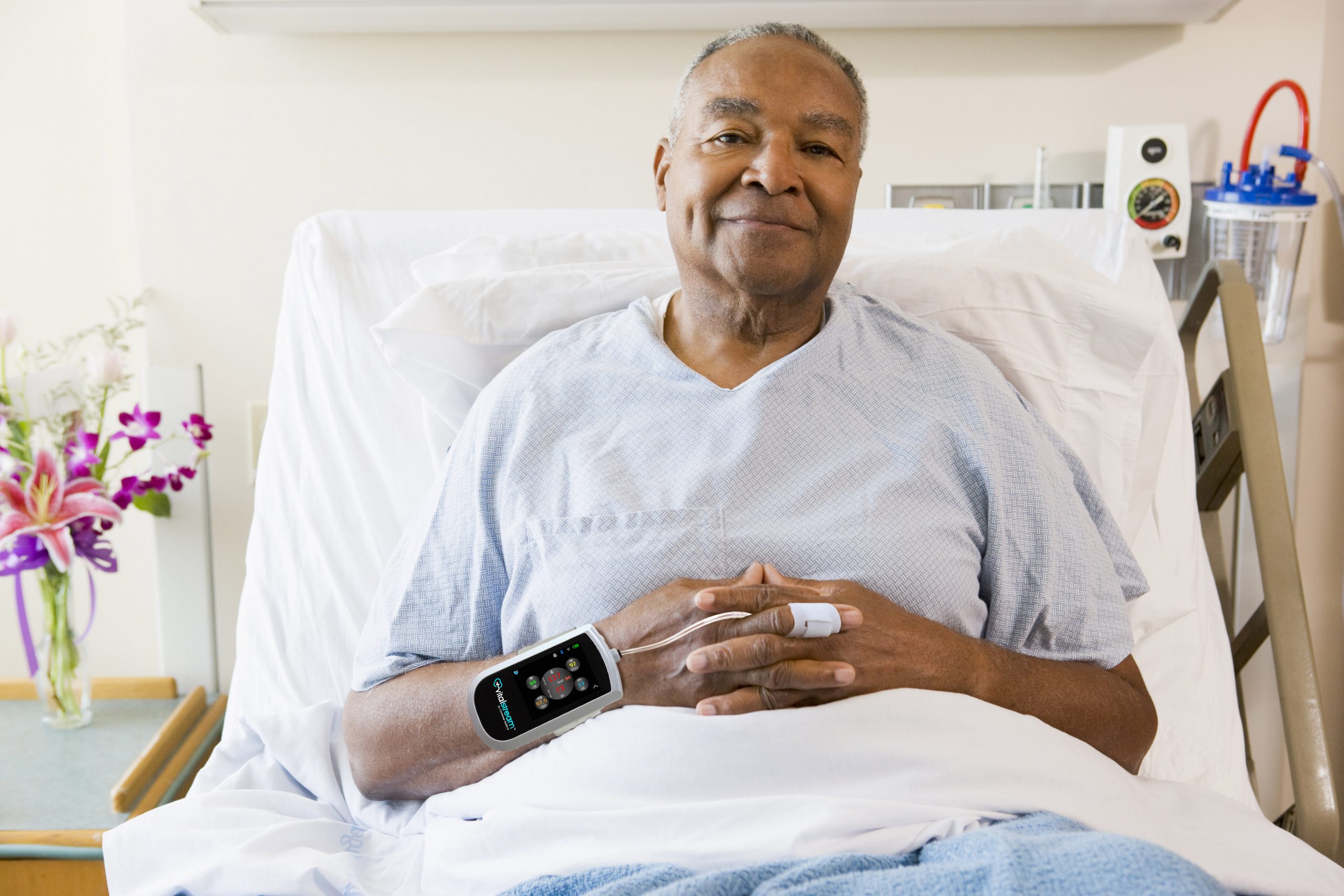
Continuous blood pressure monitor: uses, applications and advantages
The application of continuous blood pressure monitoring has historically been limited to the intensive Care Unit (ICU) and Post-Anesthesia Care Unit (PACU), due to the cost and invasiveness of the equipment. However, the development of ICU grade wearable patient monitors is opening up opportunities to widen the use of continuous blood pressure monitors across the healthcare spectrum, bringing numerous benefits.
Post-operative blood pressure monitoring
Studies have shown that patients in post-operative recovery, having been moved from the PACU back to the wards, are still at significant risk from acute hypotensive events (AHEs). In fact, the risk increases. Intermittent monitoring by a nurse, typically carried out every four to six hours, is not sufficient to pick up the early signs of acute hypotension, nor indeed to prevent a sudden severe cardiac event occurring between observations.
As renowned hemodynamic researcher Frederic Michard states in this video, continuous non-invasive blood pressure monitoring (CNIBP) beyond the PACU will save lives. Wearable monitors make this a practical reality, overcoming the obstacles of cost and patient comfort.
Blood pressure drug research
The treatment of patients with blood pressure risks is best served by establishing a continuous feedback loop between research and practice. That was the conclusion of a 2010 Institute of Medicine Roundtable report into Value & Science-Driven Health Care. The report advocated “a system in which evidence is generated as a byproduct of providing care and actually fed back to those who are providing care, so that we become more skilled and smarter over time”.
Continuous blood pressure monitoring using non-invasive wearable devices is key to enabling the scalability, generalizability and accessibility necessary to make this vision a reality. It facilitates the gathering and monitoring of data from hundreds of patients at a time by a single analyst or practitioner. That means a richer, broader spectrum of evidence can be gathered from much bigger sample groups for much less cost.
That scale in turn makes clinical research more applicable to the general population, whereas legacy research methods have run into problems when data gathered from small sample groups has been applied more generally.
By gathering and storing data electronically, continuous blood pressure monitors help to make this wealth of research data accessible across the board; data gathered by researchers can be accessed by practitioners where and when they need; data gathered by practitioners can be fed back instantly into research. Artificial intelligence can be used to analyze large volumes of data and identify patterns that inform the administering of blood pressure treatments on the practice side.
Blood pressure treatment monitoring
At a more personal level, doctors can benefit from continuous blood pressure monitoring to assess the effects over time of prescribed treatments on each patient in their care. Patients can be monitored individually, beat-by-beat, and all the data uploaded automatically.
This provides a major economy of time and money, both for the patient and for practitioners, who can gather data from multiple patients at a time without any need for one-to-one attention. Using AI, each patient’s data can be analyzed for signs relevant to the individual and the doctor notified when a change in the treatment plan might be necessary.
Ambulatory blood pressure monitoring
Continuous, non-invasive blood pressure monitoring offers major benefits for the care of chronic hypertensive patients too. It has long been recognized that for doctors to manage hypertension effectively, blood pressure readings need to be taken over a 24-hour period. This helps to rule out anomalies, such as ‘white coat hypertension’ (when anxiety induced by the medical setting causes a rise in blood pressure) and ‘masked hypertension’ (high blood pressure that doesn’t show up in the doctor’s surgery), and monitors the patient throughout a range of activities, from sleep to exercise.
The evolution of wearable beat-by-beat blood pressure monitors is enabling doctors to derive a much more accurate picture of their patients’ blood pressure readings in everyday situations. As a result, treatments and prescriptions can be more accurately matched to each individual patient, leading to the better ongoing management of their condition.
Completing the circle
Wearable ICU grade patient monitors like VitalStream are helping to solve some of the biggest challenges in modern healthcare, by enabling continuous blood pressure monitoring on a much bigger scale. A facility once reserved for the most at-risk patients can now be made available to those managing their own health at home, relieving the burden on hospitals, broadening our understanding of blood pressure conditions and treatments, and leading to better outcomes throughout healthcare system.
For more information on Continuous Blood Monitor, contact Caretaker on +1 434-978-7000
More medical news and events

Virginia Catalyst Awards Caretaker Medical with Grant to Advance VitalStream Development for Improved Patient Outcomes
The Virginia Catalyst, also known as the Virginia Biosciences Health Research Corporation (VBHRC), has awarded $3.18 million in grants to four life and bioscience projects…

Intraoperative Hypotension: A Public Safety Announcement for Anesthesia Professionals
This article from the Anesthesia Patient Safety Foundation Newsletter discusses the modifiable risk of intraoperative hypotension (IOH) and its far-reaching consequences for patients and healthcare…

Using VitalStream for cardiac surgery with Zain Khalpey, MD
We sat down with Zain Khalpey, M.D. Cardiothoracic Surgeon, Director of Artificial Heart, MCS & ECMO, and Chief Medical AI Officer (Network Director) at Honor…
